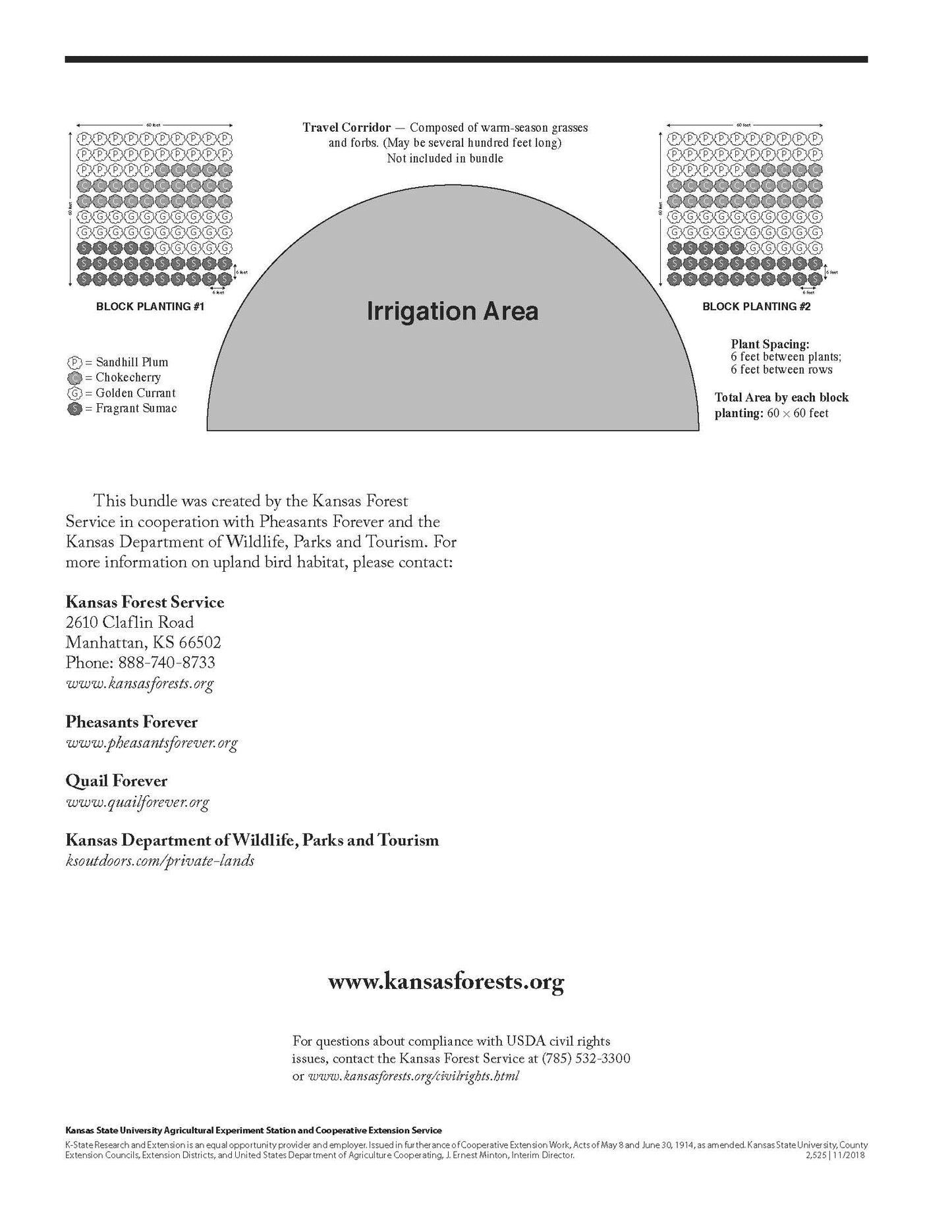Bareroot Plant Material
Pheasant Bundle
Pheasant Bundle
Couldn't load pickup availability
The Pheasant Bundle was created in cooperation with Pheasants Forever and the Kansas Department of Wildlife, Parks and Tourism to provide excellent food and habitat for upland bird species.
The bundle consists of four shrub species and contains 100 plants to create a habitat.
- 25 Sandhill Plum - thicket forming, 3 to 4 feet tall. Native to Kansas.
- 25 Golden Currant - thicket forming, 6 to 12 feet tall. Native to Kansas.
- 25 Fragrant Sumac - non-thicket forming, 3 to 6 feet tall. Native to Kansas.
- 25 Chokecherry - thicket forming, 6 to 10 feet tall. Native to Kansas.
When planted as recommended, the planting will occupy approximately a 60- by 60- foot area.
Generally, pheasants are found in the early morning in grass where they night roost. They move into feeding areas during the morning and again in the afternoon. When not feeding during the day, they move in to escape cover, such as shrubs, to rest. These resting areas are also used during harsh weather.
This bundle was created to give the planter the opportunity to create escape cover areas. After two or more areas have been created, the planter can connect the areas by using thick shrubs that provide enough cover for the traveling birds to safely move between areas. As few as two rows of shrubs provide these travel lanes.
Unused areas near cultivated fields are the best places for block planting. Corners of center-pivot irrigation fields, ditches, or gully areas where implementation are restricted are a few good examples. Developing these unused areas provides an essential part of pheasant and quail habitat without taking land away from production.
Planting these thickets creates areas to escape predators, survive harsh weather, find food, and travel safely. Grassy areas mixed with a variety of forbs and legumes are vital for upland birds. These areas harbor insects that are an important source of protein to mature birds and their young. Native bunch grasses mixed with native forbs planted in strips or blocks adjacent to newly established areas offer excellent opportunities for birds to thrive.
Use the planting design below as one example of how block plantings are used with traveling corridors to give upland birds the habitat they need to survive. Your planting does not need to be exactly the same.
Your property may already have areas for travel corridors but is lacking escape cover areas. Perhaps it is covered in heavy thickets and needs to be manicured into block plantings for grassy areas and ravel corridors. The key to upland bird survival is to provide these areas. Your dedication to creating and maintaining these areas will give upland birds a chance to survive and increase in number.













